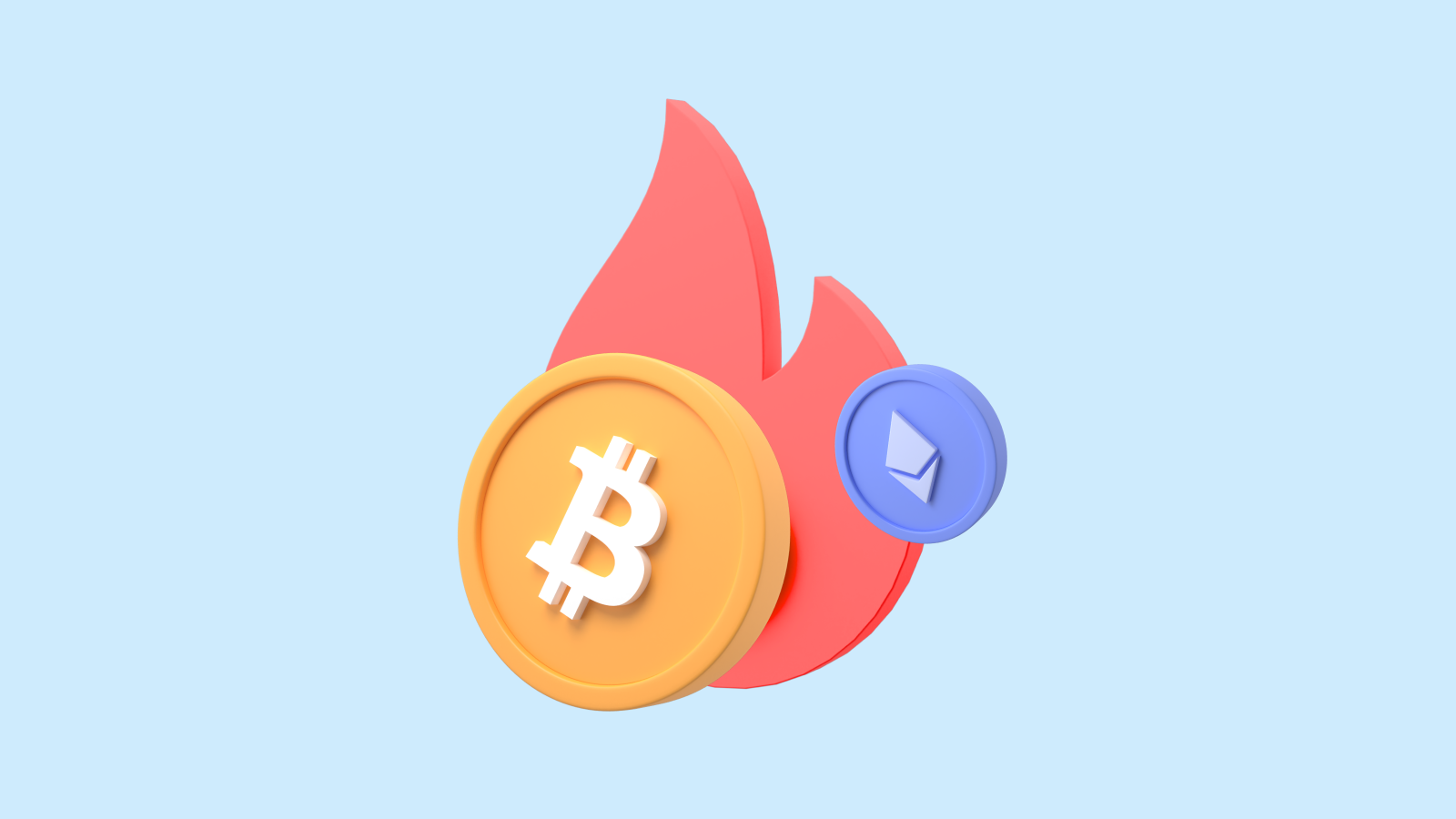What Is a Token Burning?
When a token is sent to a wallet address that isn’t used for the purpose and it disappears from circulation — a token burning process is happening. That unusable address is called a burn address or “eater address” — its current balance is visible on the blockchain for the public, but access to its contents is unavailable to anyone. When a token is sent to a burn address, it vanishes forever.
Any person who has cryptocurrency can burn it, but as you can understand people don’t do that without a reason. Mostly, this technique is used by developers who want to burn just a precise amount of cryptocurrency. Why? The matter is that token burning turns down the supply that making tokens rare and more desirable, making their price higher and more beneficial for investors.
But the surprise is that it’s not a guarantee to reduce the price of the token. Sometimes a token burning can be used for deceiving investors. How? Developers just claim that they burn definite tokens while they send those tokens to a wallet they owe. That’s why you should be careful and always do research on the crypto you’re going to invest in and markets, as well.
Token burning goes back to stock buybacks, which happens when a company that issued the market with its shares buys them back at the market price retaking them and decreasing the total shares at the market.
A lot of cryptocurrency projects use an approach called “token burning” to restrict the supply of their tokens, but no tokens are burnt in the process. However, they stay unusable in the future.
How Does It Work?
So, to sum it up — the main aim of token burning is to remove a certain amount of a token from the circulating supply.
When a company wants to burn tokens, it has two options:
- buy existing tokens from the market
- take existing currency out of circulation
These could be tokens kept elsewhere, and to burn the tokens, their signatures are sent to an “eater” address. This is a public wallet that can be viewed by anyone, and the coins’ status is broadcast to the blockchain.
There are companies that burn tokens as a special event while others, such as Binance have quarterly burns. How and why companies apply the mechanism absolutely depends on what they want to achieve.
Advantages of Burning Tokens
First, token burning is a deflationary mechanism usually used to affect the token price. It comes down to the laws of supply and demand. So, if the demand stays the same or increases, the price will obviously go up. If the demand decreases, the burning won’t be affected.
Some cryptocurrency exchanges like Binance, Huobi, and KuCoin burn their tokens to encourage their holders to keep them as they become more valuable. Many trading platforms create use cases for their tokens and additional rewards for their holders, such as the opportunity to pay for goods and services online paying with their token.
Proof-of-Burn

Proof of burn (PoB) is a mechanism supplied by a blockchain network to make sure that all nodes that participate come to an agreement about the true and valid state of the blockchain. PoB is also called a system with minimal energy waste compared to Proof-of-Work, shortly — PoW. It allows miners to “burn” virtual currency tokens. As a reward, they get the right to write blocks in proportion to the coins they burnt.
Miners send the tokens to a verified unusable address. Miners can burn the native currency or the currency of an alternate chain, such as Ethereum. In exchange, they receive a reward in the native currency token of the blockchain.
Proof-of-Burn uses virtual mining rigs instead of physical ones to confirm transactions. PoB miners cause coin burns to show that they are involved in the network and be permitted to mine.
The more tokens a miner burns, the more his mining power is. Higher mining power means that the speed of finding new blocks is faster and more efficient. As a matter of fact, the miner earns more rewards.
Token Burning Use Cases
- It can help the cryptocurrency to be increased in price. It’s not a rule, but there were many positive cases when it worked after tokens burning.
- In case of cryptocurrency has a high inflation rate, burning tokens can control the increase.
- It's a more ecological way of adding new transactions blocks to a blockchain with a proof-of-burn (PoB) mechanism.
- It can keep the price peg of stablecoins, as by burning or minting new tokens the controlling authority can impact the token’s price to remain at a more or less constant level.
- Some projects burn tokens that are not sold to give investors better transparency.
What Coins and Tokens Can Be Burned?
Any cryptocurrency could be burnt. The process of burning may be initiated by a community or a project’s developers team who buy tokens back from the market or burn the supply they already have.
As an example, Crypto exchange Binance has burned nearly about 1.4 million BNB tokens in October 2021, and it’s the largest ever in dollar terms, but not by the number of tokens.
Closing Thoughts
To reduce inflation and motivate users to hold a definite cryptocurrency, communities and developers can use a token-burning technique. The point is that it can be extremely beneficial because reducing supply results from increasing holdings price. Besides, it is used as a marketing tool to attract investors.
It also can be quite risky, as it’s not a 100% percent guarantee that the remaining tokens will rise in value. It’s still a vague possibility and a question of luck. It’s useless to burn Bitcoin as there are approximately 21 million tokens out there.
